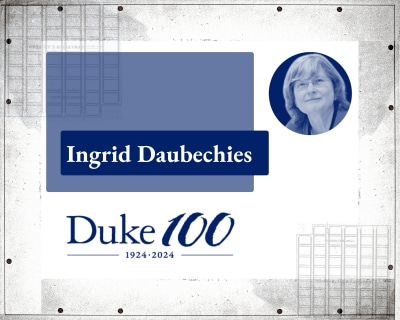
The Images of a Legendary Female Mathematician
Cynthia Rudin pens a tribute to the work and leadership of her former advisor and longtime pillar at Duke, Ingrid Daubechies
We’re sorry—the news story you were looking for has been archived.
Please see the most recent stories below.

Cynthia Rudin pens a tribute to the work and leadership of her former advisor and longtime pillar at Duke, Ingrid Daubechies

Joseph Izatt, the Michael J. Fitzpatrick Professor of Engineering and chair of Duke’s Department of Biomedical Engineering (BME), passed away on Sunday, April 7

The federally endowed award supports students pursuing careers in mathematics, the natural sciences and engineering